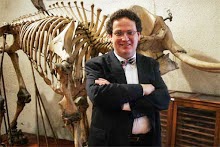And from the IISE's Department of Shameless Self Promotion, Sara Pennak and I have our new book What on Earth? 100 of Our Planet's Most Amazing New Species being released on April 30th. Published by the Penguin Group under the Plume imprint, the book features 100 species discovered over the past ten years that are for one reason or another surprising, unexpected, or entertaining.
Here is an overview from the Penguin site:
Summary of What on Earth?
A chameleon so tiny it can fit on your thumbnail? A spider
named after David Bowie? A fungus that turns ants into zombies? What on
Earth?
What on Earth? is a compendium of the 100 coolest, weirdest, and most intriguing new species of this century as determined by the International Institute for Species Exploration. From animals to plants, fossils to bacteria, What on Earth? is an accessible, informative, and offbeat look at the creatures that also call our planet home, including: • A dangerous cobra that can spit its venom almost ten feet • A miniscule orchid that is less than a half-inch wide • A rainforest mushroom named after the cartoon character Spongebob Squarepants • A beautiful seahorse that changes colors to protect itself from predators • A stick insect that is as long as a man’s arm Featuring visually striking images alongside surprising facts about each new species, What on Earth? is a testament to the incredible and ever-evolving diversity of our planet. |
The book is available for advanced orders through Amazon, Barnes & Noble, and other booksellers in the U.S. and overseas.
Essays at the beginning of each chapter introduce readers to various aspects of species exploration and each species includes beautiful (or, in some cases ugly) photographs along with natural history anecdotes. The book, like the IISE's annual Top 10 New Species list (which, by the way, is coming on or near Linnaeus' birthday on May 23rd), is intended to make the public aware of the biodiversity crisis, the steady progress being made discovering and describing earth's species, and the special roles played by taxonomists, natural history museums, and botanical gardens in expanding our knowledge of the occupants of the biosphere.



